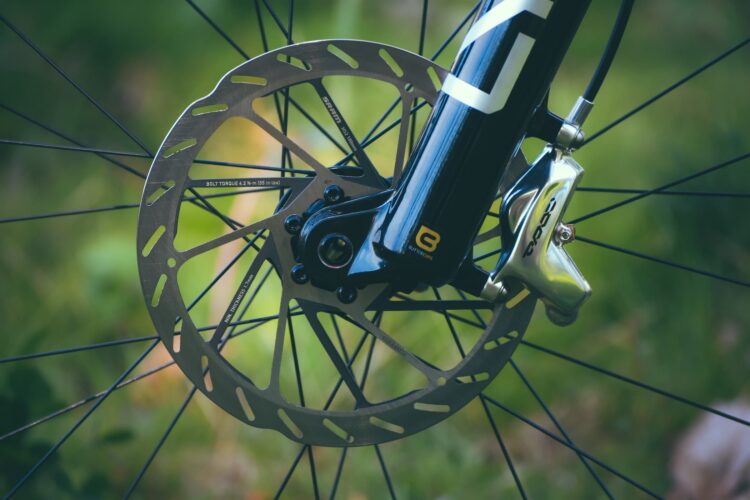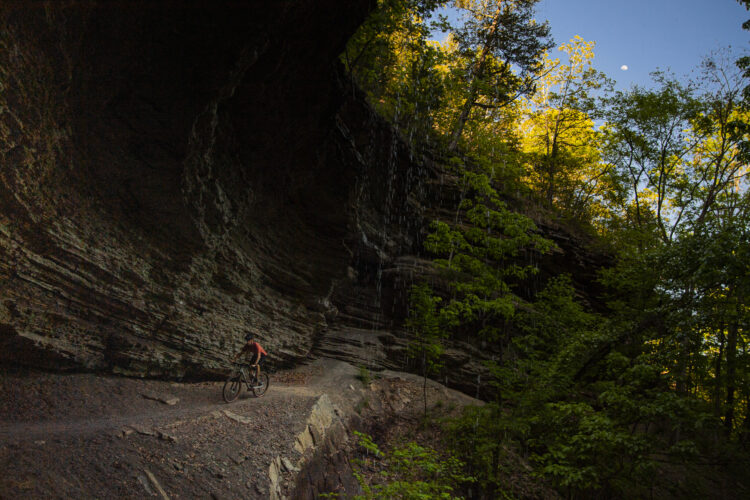
If you live in an area with cold-weather mountain biking in the winter, maybe you can relate to this scenario. It was a Saturday, a few weeks back, and the temperature was a brisk 29°F as I climbed out of my rig at the trailhead. I did a few jumping jacks while I got my shoes and gloves on, strapped on my hip pack, and pulled my bike off the rack. A final check of the thermometer told me the temperature had jumped 1°.
This ride, similar to many of my winter rides in freezing temperatures, would best be described as sluggish. No matter the effort I put in, I never seemed to find that rhythm that I so often do on other, warmer rides.
The trail I chose to climb had a good amount of rocky tech that is difficult, but certainly within my wheelhouse. Not that morning. That morning I couldn’t seem to find the lines I’d found so many times before. I had no power, no push to make it up the steeper sections. Despite giving some sections a few tries, I ended up walking nearly all the technical parts until the trail gave way to smoother, less vertical singletrack.
I thought my lungs were on fire as I reached the top. I wouldn’t hang out for long on a warmer day before starting my descent. It’s what I came for, right? On this cold morning, I nearly collapsed as I got off my bike, legs shaking and cramping, fumbling for my water bottle. ‘Going down,’ I thought, ‘I’ll ride much better.’
Nope. I couldn’t have been more wrong. I still struggled to choose lines, despite knowing the trail I was descending pretty well. My arms and legs felt shaky, and I seemed to be about half a second late on body positioning over my bike. Two chunky steeps nearly had me over the bars because my weight was not far enough back. I rode terribly. With zero confidence in my riding abilities, I made the decision to pull back, walk the rest of the steeper parts, and cruise back to my rig.
Now I’m not saying that every winter ride goes as poorly as this one did, but I do tend to struggle more in the cold. My arms and legs get shaky quicker, and my muscles feel more fatigued. Overall, I am more exhausted after a cold-weather ride. My lungs burn and I find it much harder to catch my breath. Every gasp brings a greater burning sensation. Why?
Let’s rule out the obvious
I know what you are all thinking because I was thinking the same thing. We have a tendency to be less active in the winter. Many people stay indoors, curling up by the fire with their favorite winter ale.
And while I have the same pull to the heated interior of my house, I have tried to make a concerted effort to be on the trails as much in the winter as I am in the summer. And, yet, even with little change to my mountain biking schedule, winter riding remains a chore.
To get to the bottom of this, I grabbed a cup of coffee with Rachel Carson, a doctor of physical therapy and certified strength and conditioning specialist with Capacity PT in Bend, Oregon. She is also an orthopedic clinical specialist. After receiving her doctorate in 2016 in Texas, Carson sought out new adventures in the Northwest, moving to Oregon. All that to say, she would have a much better explanation than I ever could.
It’s about energy
Carson confirmed that riding in the cold is more difficult than riding when it is warm.
“The whole chemical process of what goes on in the body is tougher in the cold,” she told me. What it boils down to is that our bodies have to work harder in colder weather. Simply put, working harder means increased levels of energy expenditure.
“The gist of it is that cold weather is way harder on our body because our body is continually trying to keep itself warm,” Carson explained. With our body already using energy to keep itself warm, we end up expending energy on top of energy — the energy our body is using due to the cold and the energy we would naturally use on a ride.
But where is this energy coming from? Since more energy is both needed and expended in cold weather, we are more likely to tap into our body’s stored carbohydrate, glycogen, at a faster rate. Tapping into this energy store quicker leads to our muscles being fatigued at a more rapid rate.
Energy expenditure isn’t the only culprit. Colder weather means changes in our body’s blood flow.
“Everything is being redirected to your core and organs to keep the vital parts of your body warm. Arms, legs, and extremities aren’t getting as much blood flow which is going to make those harder to function.”
Dehydration: maintaining proper fluid intake all-year round

It is easy for me to drink lots of fluids on my rides when it is hot outside. It’s a totally different story in the winter. Frankly, I’m just not that thirsty. Carson confirmed this issue, saying fluid intake can “be diminished as much as 40%.”
We drink less and we sweat just as much, maybe more. Cold weather mixed with more clothing layers that soak up sweat cause us not to realize it. “In the summer, our first thought to ‘I’m sweating a lot’ is to grab our water. We often don’t have that reaction in the winter.”
My lungs are burning
So why are my lungs burning on cold rides? Carson gave me a simple answer: “our lungs don’t like cold air.” The burning lung sensation many of us experience when riding on a cold day is actually inflammation causing constriction and irritation of our lungs and airways. “When we breathe, our body’s natural response is to warm and humidify the air. Cold, dry air can cause some inflammation in the lungs before we exhale.”
So what can we do?

Certainly, I’m looking to offset as much discomfort as I can and enjoy my winter riding as much as I enjoy the warmer rides. Here are some things Carson suggested to enhance winter riding performance.
- Fuel up: Since our bodies are going to use more energy during a winter ride we need to make sure our tank is full. She suggested a snack or two during the ride to keep the tank full.
- Hydration is key: Cold weather tricks us into thinking we’re not thirsty. We are. Think of how much you would drink on a summer ride. Drink that amount. And make sure to throw an electrolyte mix in there. Carson also suggested a balaclava-style mask. These not only help prevent dehydration from water vapor loss through breathing, but they can help with the burning lung sensation by helping warm the air we breathe.
- Start a vitamin D supplement: Correlations can be made between vitamin D levels and cardiorespiratory fitness. It’s winter, it’s dark, and we could all use a bit more vitamin D.
Longer and warmer days are around the corner, and the anticipation is killing me. But for the handful of weeks left in winter, I’ll be out on the trails, huffing and puffing my way to the top, attempting to optimize my performance.






Acclimation matters, too. 29 is balmy here in northern Wisco, and we seem to ride just as well that temp as at 70. Snow smooths out the trails and a course record on one of our trails that held up for a long time was set in March. You shouldn’t be sweating heavily. If you are, you’re overdressed at the start.